We see a chair mostly as a place to sit down, give our feet a rest, or get to a comfortable height when at a table. It’s a simple utility object that we hardly ever notice. Design thinking however, may bring this not particularly remarkable piece of furniture to new heights. Yet a chair can hardly be a showstopper…or can it?
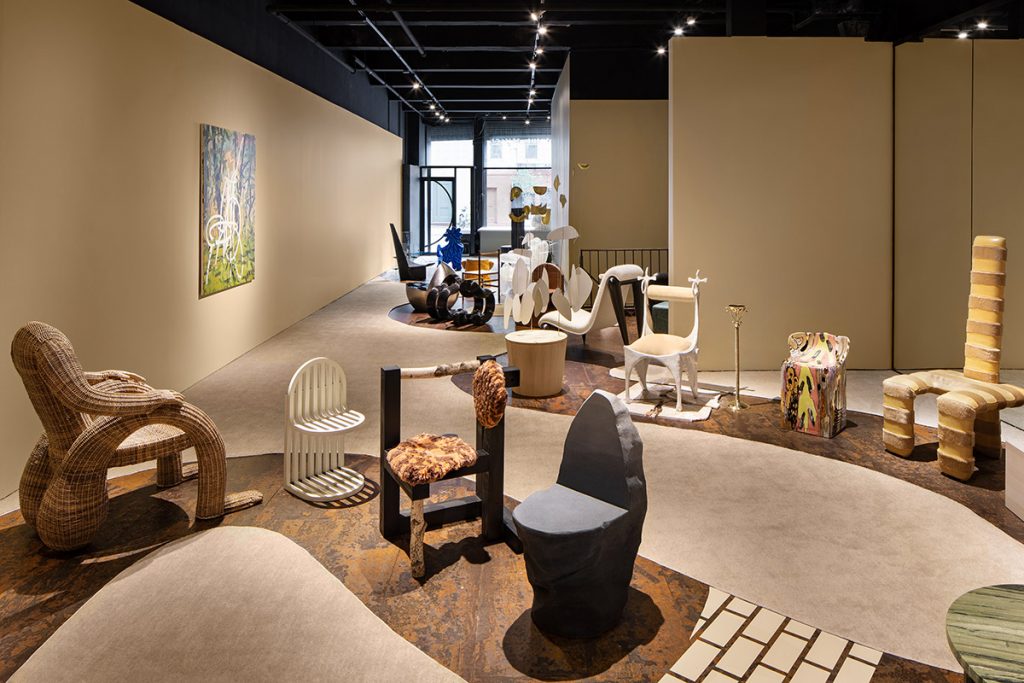
The Future Perfect gallery of contemporary design in New York features a whole exhibition devoted to chairs. Laura Young, The Future Perfect gallery director, addressed interior designers, artists, industrial designers, sculptors and even ceramicists with a brief to create a single chair of their own imagination. The resulting show is ambitious, and the exhibits are overwhelming and often surprising.
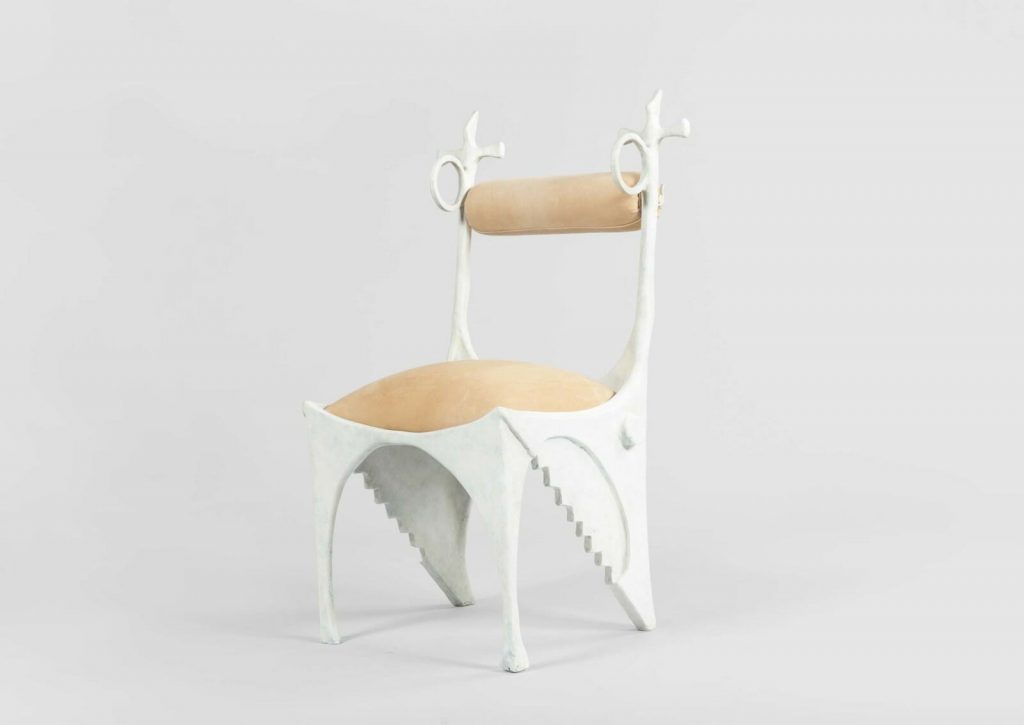
Tribute chair by Jason Koharik at the Future Perfect exhibition
The works selected for the collection range from creations that look very much like a conventional chair to curiosity museum-worthy masterpieces.
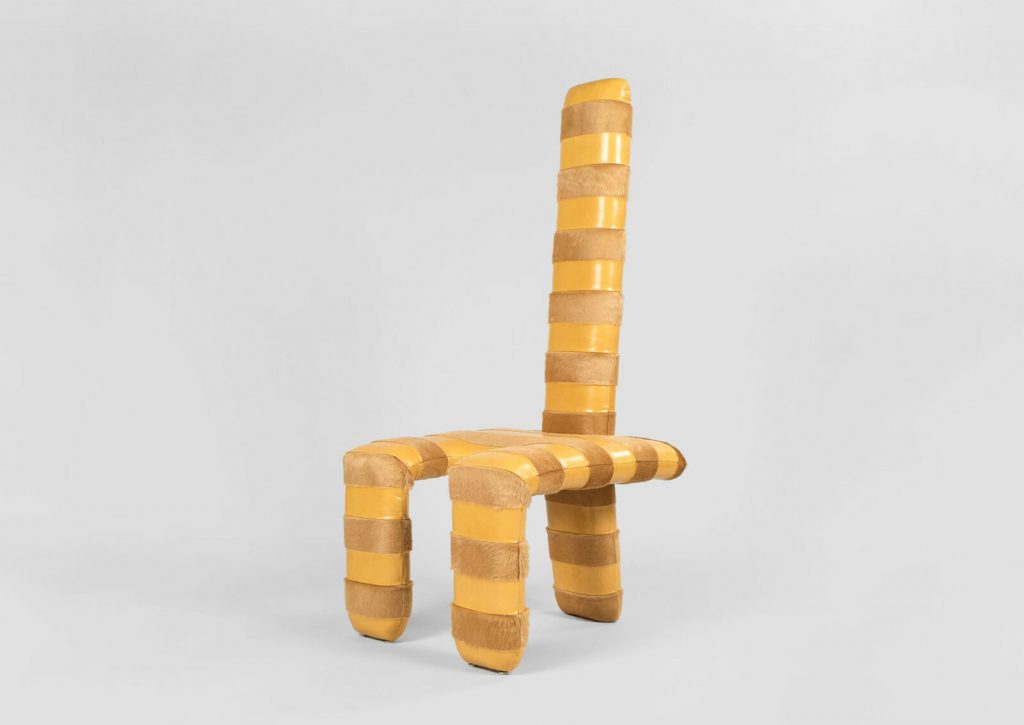
Who chair by Alex P White at the Future Perfect exhibition
Each creation has its own story to tell, and whether you’re drawn to a glass chair or epoxy resin and balloon option, there’s something to appeal even the most discerning eye.
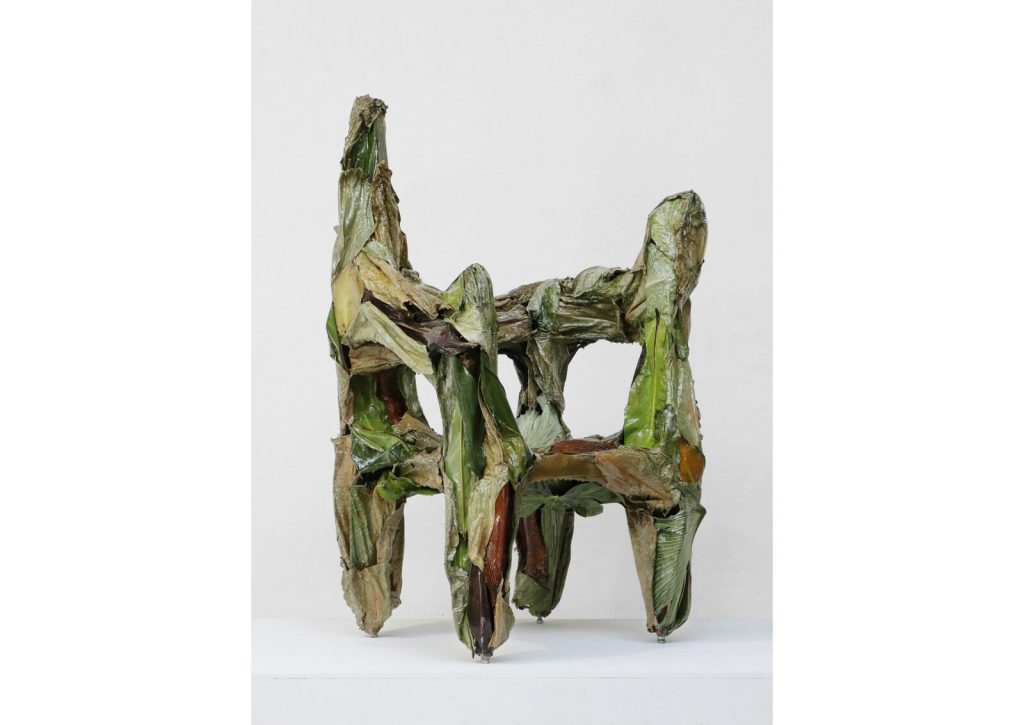
Protoplasting Nature No.5 by Marcin Rusak at the Future Perfect exhibition
Across the Atlantic Ocean, Pearson Lloyd, a London based studio, presented a family of mono-shell seats that are designed to be simple yet sturdy. The Kin collection is made up of plastic chairs and stools in eight bold colors.
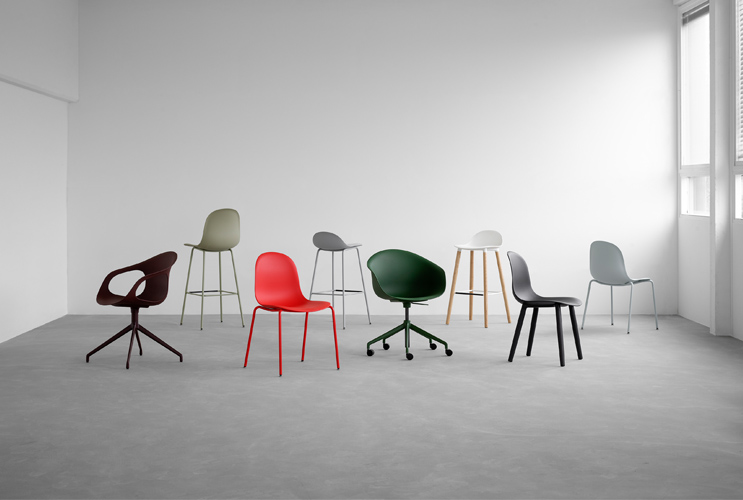
Pearson Lloyd’s Kin seats
The designers aimed to use the minimum amount of plastic and aluminium without sacrificing structural integrity and sturdiness of each seat. All the chair shells can be further customized with upholstery, and modified to use different bases, including four metal or wooden legs, or an archetypal four- or five-star metal base.
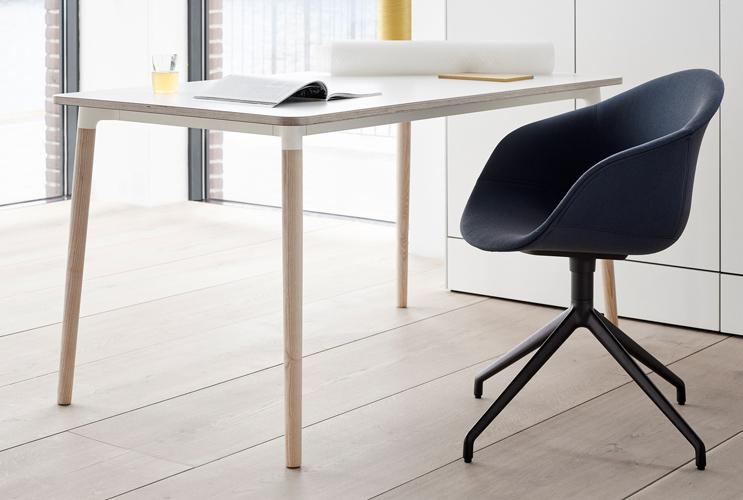
A monoshell seat by Pearson Lloyd
The designers take cues from the natural world and are suggesting the form that plastic might take if it were left to shape itself, as it demonstrates unique economy of materials and strength.
To distinguish his furniture, artist Matthew Day Jackson has developed a Formica surface that subtly replicates the surface of the moon.
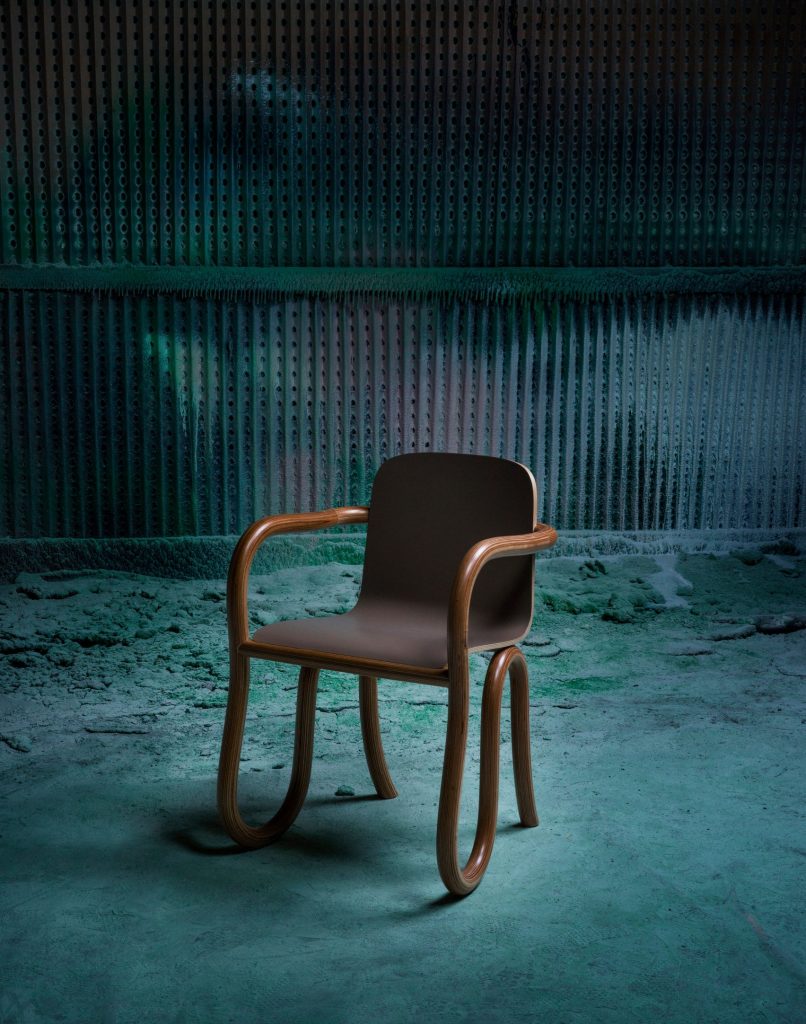
Matthew Day Jackson’s Kolho chair
His chairs with curvy cartoonish wood frames feature a seat of a gentle texture that mimics, to a certain extent, the surface of the moon. The designer created this surface by developing a new variety of Formica, the wipe-clean laminate material commonly used for cafe furniture in the 1960s and 70s.
The Formica Group items were inspired by the images taken from NASA Lunar Reconnaissance Orbiter in 2009. They are produced with unique steel press-plates to create a textured laminate at 80 microns in depth, which is a scale representation of the far side moon surface. And the chair’s form is based on the Apollo spaceship and the moon’s Dionysus crater.
A chair made famous by ‘The Spy Who Loved Me’ of the James Bond movies has been revived by the Montana Furniture, a family-owned company established in 1982. Pantonova, a seating system from 1971, retains its iconic status while bringing an infinite range of uses in modern offices and households.
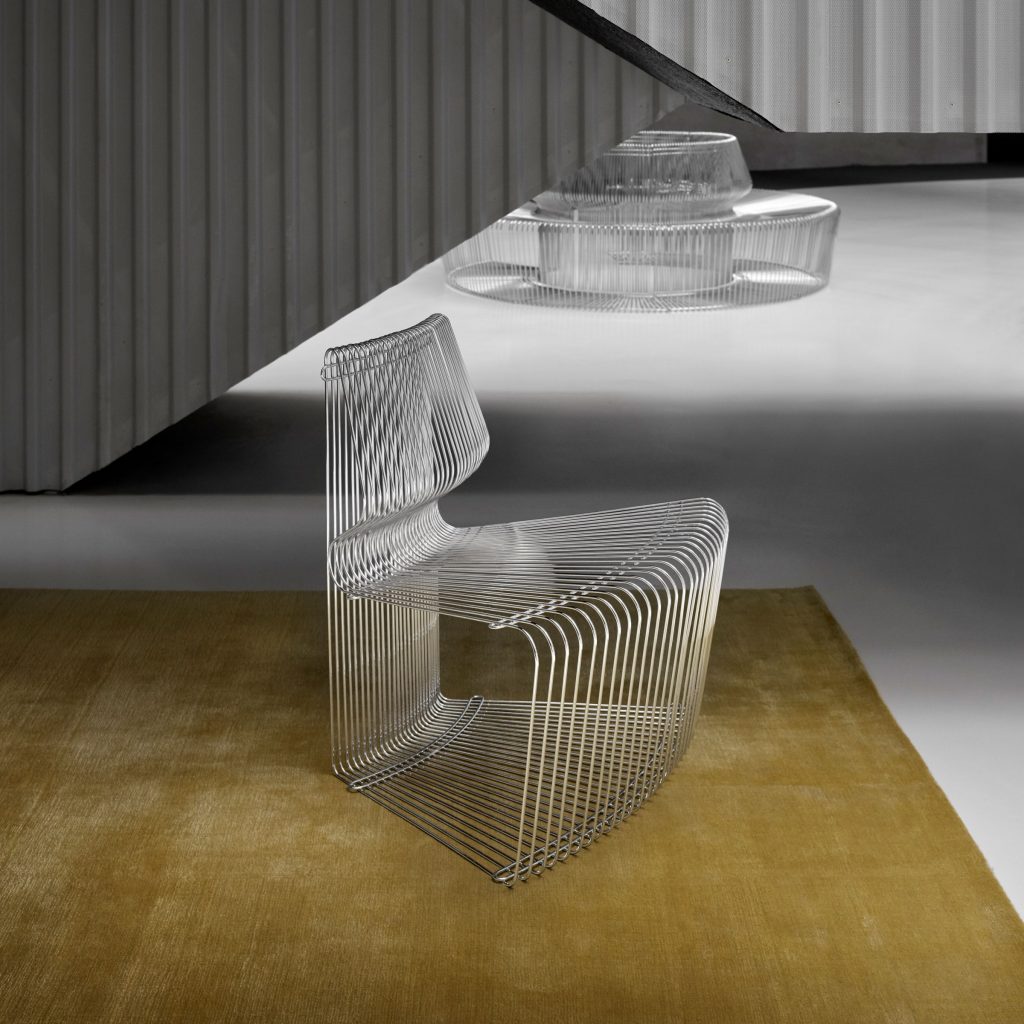
A Pantonova Linear chair
The Pantonova’s distinctive feature is its curved frame made from bent steel. There are three different versions, which can be grouped into various organically shaped seating formations and covered with a variety of cushions.
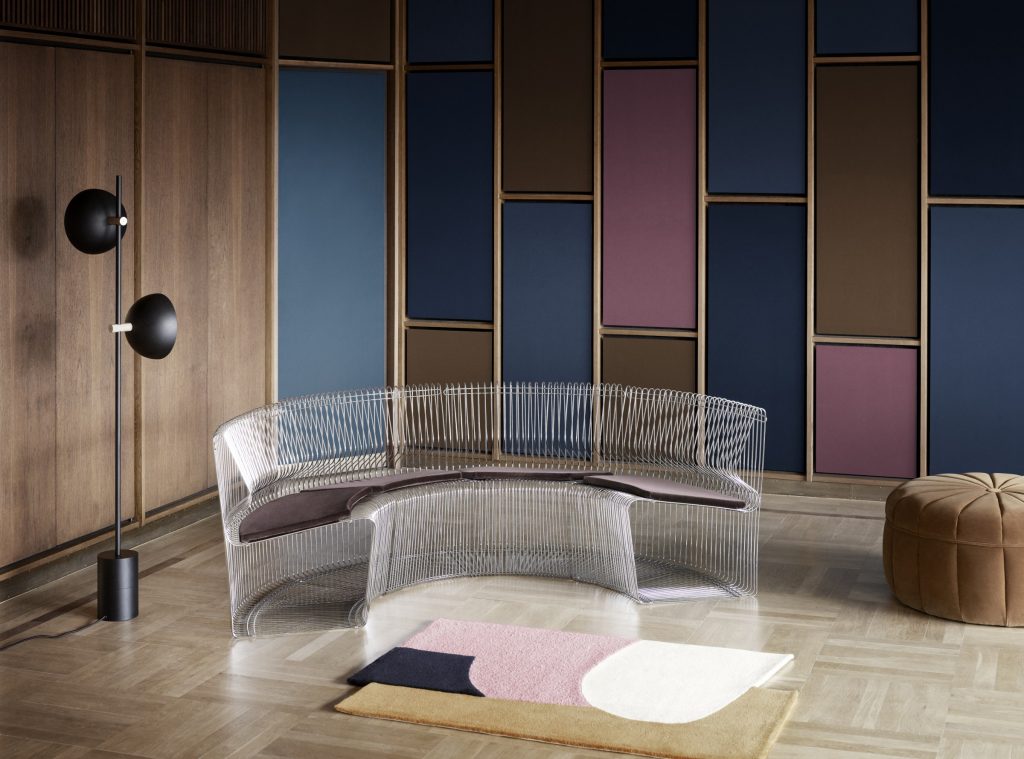
A Pantonova sofa